Refraction photography is an amazing art form that can turn simple objects into beautiful works of art. But it takes a little bit of know-how to get started. In this article, we will teach you the basics of how to create refraction photography using everyday items like pencils and water glasses. So let’s get started!
Refracted light photography comes in several different forms. The effect is caused when light passes through an object of denser mass. This makes the light bend.
There are several different ways you can use this in your photography:
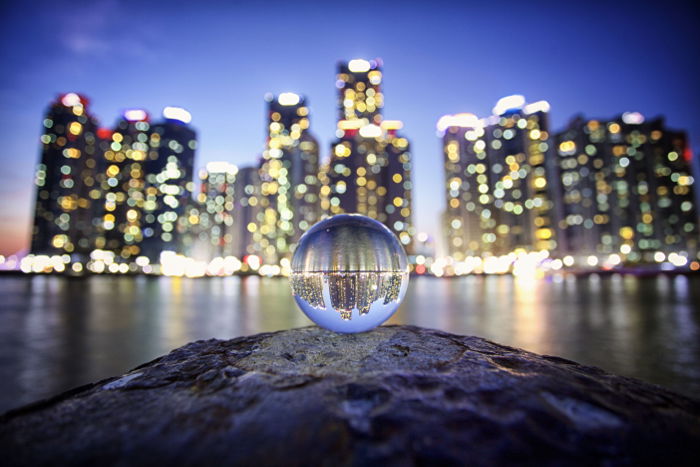
One of the best items you can use for refraction photography is the crystal ball.
One of the best forms of refraction photography you can try involves using a glass ball. When refraction occurs inside a spherical glass ball you’ll be able to see the inverted image of the background behind the glass ball.
This effect can be great for landscape images, where the image inside the ball displays fish-eye like characteristics. But you’re photographing with a regular camera lens.
There are two main types of glass balls you can use, marble and the crystal ball.
We cover crystal ball photography in this in-depth article.
An even cheaper and readily available form of glass ball is the marble! These even come in larger sizes that approach those of a small crystal ball.
There are several good reasons for using marbles in your refraction photography, but there are a few drawbacks.
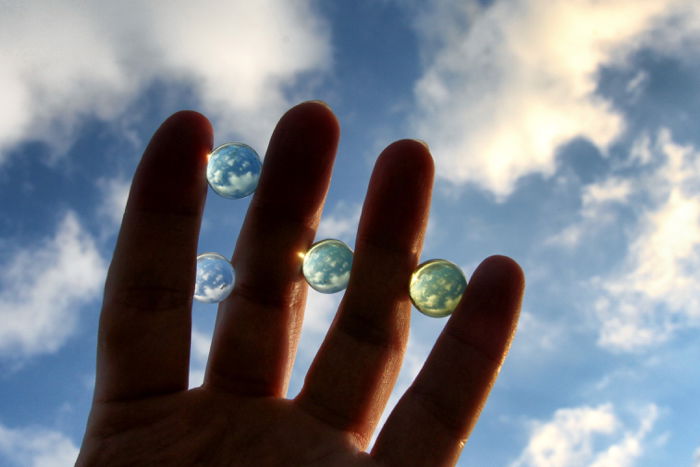
A great alternative to a glass ball is a wine glass. The more spherical the wine glass, the better. An empty wine glass won’t produce a refracted image, so first you’ll need to fill it with water.
The water in the glass now provides an area of denser mass. When light passes through it, refraction happens.
Just as with the glass ball, your image inside the wine glass will be inverted. What makes a wine glass a good viable alternative to a glass ball then?
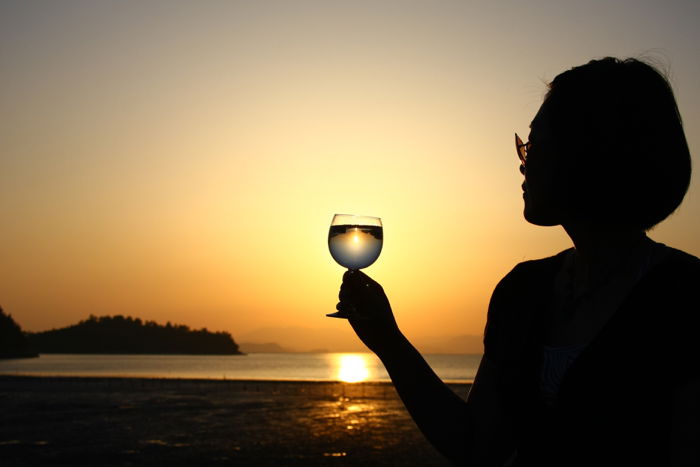
A wine glass can be a lot of fun to experiment with for refraction based imagery.
When water forms a spherical drop you’ll be able to see an inverted image inside it. In fact refraction occurs in any container of water. This is because it’s denser in mass than air.
In terms of an interesting effect for photography though, concentrating on water droplets works best.
How can you make use of these then? Here’s a list of potential scenarios.
You’ll need a macro lens for droplet photography. This is because of how small the water drops are.
Adding rain X to a clear sheet of glass will make the water form droplets. Alternatively you can use glycerine, a clear liquid that will also form droplets which you can then photograph.
Make a nice pattern of droplets on your glass. Now make two piles of books, with a gap between then. Bridge the glass across this gap.
You can now place an image underneath the glass, which will then be refracted into the water droplets.
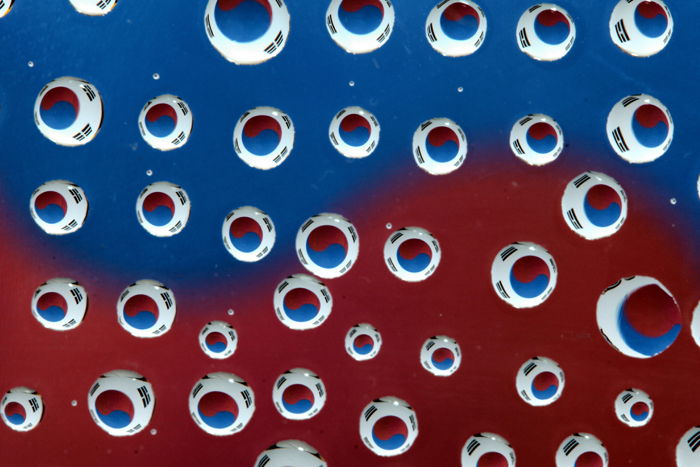
I used the South Korean flag here, due to its circular central symbol.
Producing water droplets is a fun experiment you can try at home. But capturing those water droplets is a little trickier. You’ll need to use off-camera flash to achieve these photos.
You can either try to catch a droplet mid-air as it falls from a tap. Or you can capture a droplet as it splashes into a tub of water.
A fun experiment to try at home is water droplets on CDs. No need for rain X with a CD, the water will naturally form a droplet on a CD surface.
You can use refracted light to create some interesting rainbow effects in a dark room, in combination with a torch and long exposure photography.
A similar experiment is mixing water with oil. In this case, you’ll need to mix oil and water together in a shallow glass container, and once again bridge two piles of books with your container. Now you’ll need to put some interesting backgrounds underneath it.
Finally, set up your camera on a tripod overlooking the container, and use a macro lens to photograph interesting patterns.
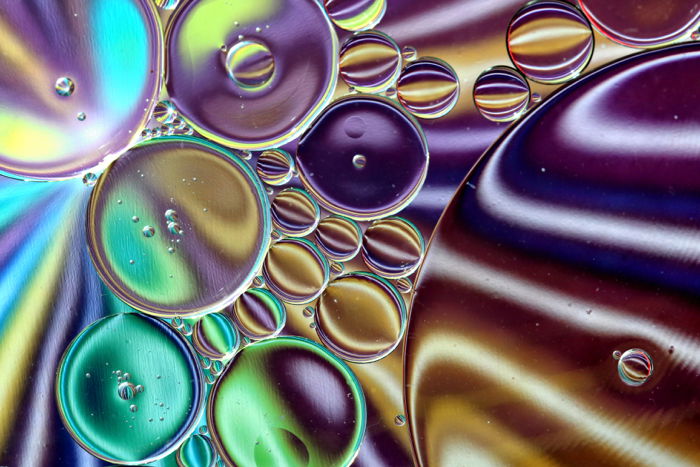
Mixing oil and water can create some very interesting patterns, and you can use refracted light for a more artistic effect.
Of course, it’s possible to find water droplets in nature after it’s rained. Think of water drops on a spider web, or perhaps on the edge of a leaf. Photographing a flower behind these naturally forming droplets can be a very popular type of photograph.
Not patient enough to wait for the rain? You can always simulate the rain by using a spray can, and spraying water onto a spiders web or onto a plant.
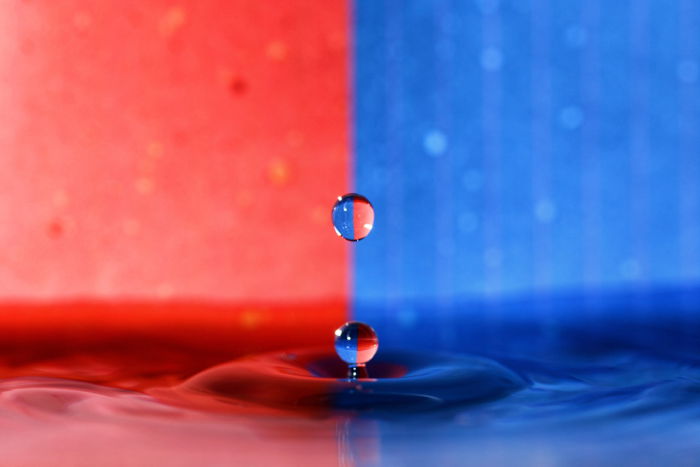
Water drop photography is a lot of fun to try, especially when you use it to produce refraction as seen right to left in this image.
Yet another piece of glass you can use for refraction is the prism. This works differently to the spherical ball, as it splits and redirects the light.
This can be used creatively in your photography to produce photos that will have your friends wondering how you did it!
When you take photos using the prism in this way it will look like a double exposure, or a Photoshop manipulation.
Neither of those are true though. You can take this type of image in a single photo.
This is a tricky type of photo to produce though. You’re taking two, possibly three images in one photo. So how do you go about doing this?
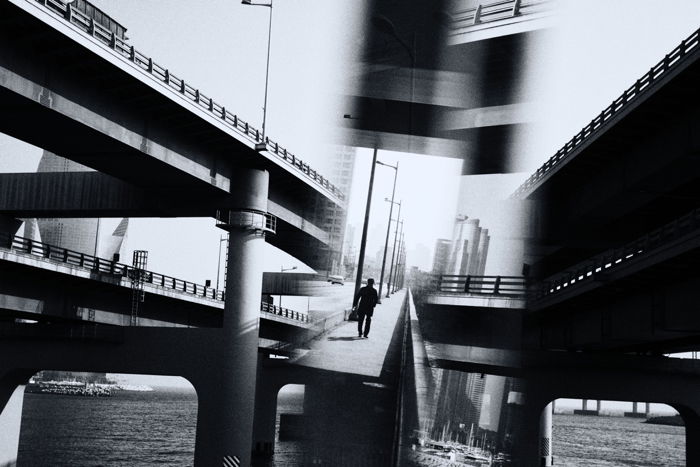
You can use a prism in some really creative ways. Here is a street photo taken with a prism.
Most people associate a prism with rainbows. To find where the rainbow is being projected by the prism, rotate it until you can see it.
You can now direct the rainbow onto something that will make for an interesting photo.
This can be a textured background, or perhaps you can use this in your portrait photography. You’ll obviously need a sunny day for this, but also think about the angle of the light and the time of day you photograph at.
Remember that the smaller the prism is, the smaller the rainbow will be. It gets larger the further away the object you’re projecting onto is.
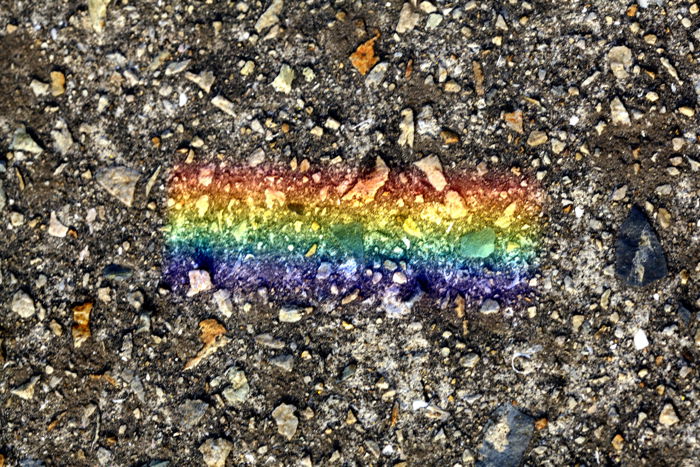
I will end this article with yet another way you can use refractive light creatively.
This is a technique called refractography. In this method you’ll use a glass object as a lens!
Read on to find out how you can do it as well.
To create one of these photos you’ll need the following photographic, or household items.
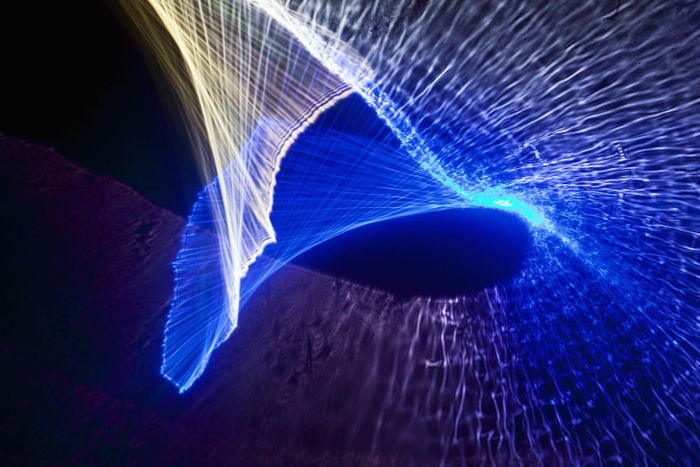
Refractographs can be a lot of fun to create, and look very abstract. In this image light was passed through the stem of a wine glass.
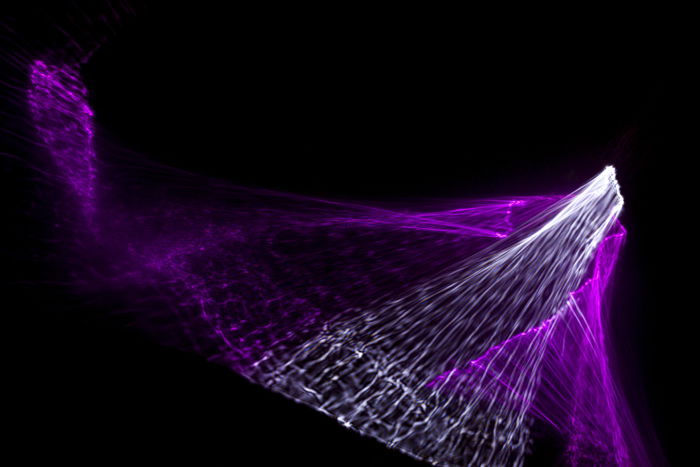
Using the same setup, but repositioning the wine glass can create different light patterns.
There are many ways you can take stunning creative photos using refractive light. Have you ever tried one of the techniques mentioned in this article?
We’d love to see your work, so go ahead and show us or tell us in the comments section below.
Which of these techniques do you find most inspiring? Once again use the comments section to talk about which of these techniques you’ll try, and post your results once you’re done!
So now it’s over to you, to get out and use refractive light as creatively as you can!
Looking for more creative photography inspiration? Check out our new post about rainbow photography next!